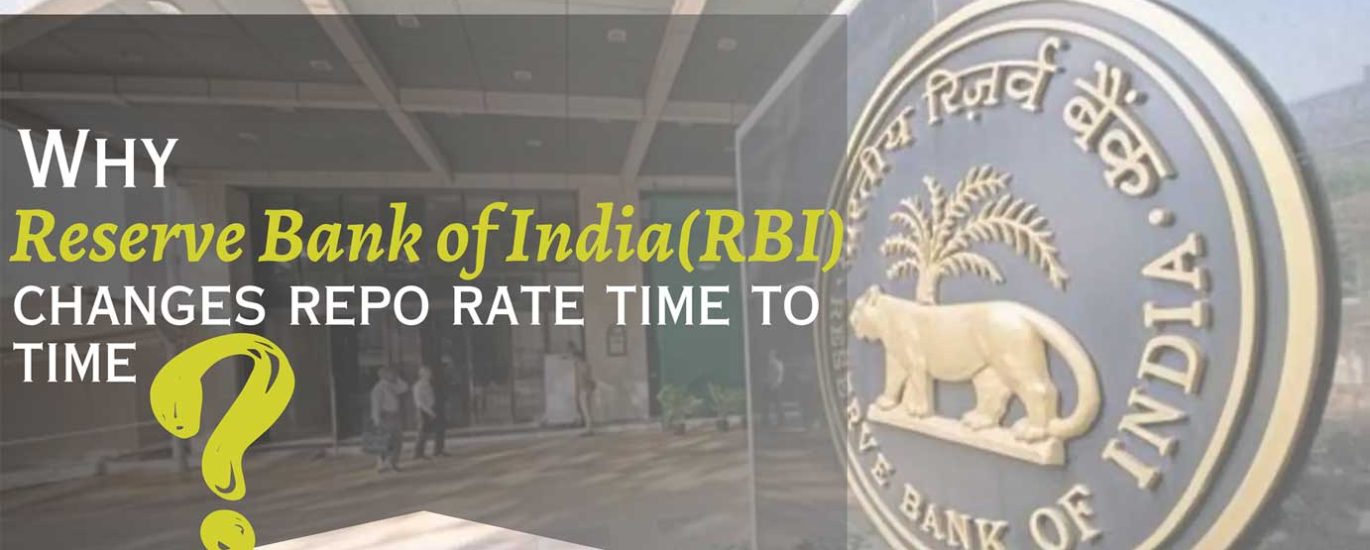RBI Changes Repo Rate
The Reserve Bank of India (RBI) is the central bank of India and plays a crucial role in managing the country’s monetary policy. One of the key tools the RBI uses to manage monetary policy is the repo rate. The repo rate is the interest rate at which the RBI lends money to commercial banks. In this blog, we will explore why the RBI changes repo rates from time to time and how these changes
impact various aspects of the economy.
1. What is Repo Rate?
Repo rate, also known as repurchase rate, is a key monetary policy tool used by central banks to regulate the money supply and control inflation. It refers to the interest rate at which central banks lend money to commercial banks for a short-term period, usually against government securities as collateral. When the central bank increases the repo rate, borrowing costs for commercial banks rise, encouraging them to borrow less and reduce the money supply, which helps in curbing inflation. Conversely, lowering the repo rate decreases borrowing costs, promoting increased lending and liquidity in the economy. The repo rate serves as a benchmark for determining interest rates on various loans and affects borrowing costs for businesses and consumers.
2. What is Reverse Repo Rate?
The reverse repo rate is the opposite of the repo rate. It represents the interest rate at which central banks borrow money from commercial banks or other financial institutions. In a reverse repo transaction, the central bank acts as the borrower and provides collateral (typically government securities) to the commercial bank. By conducting reverse repo operations, the central bank absorbs liquidity from the banking system, reducing the supply of money in circulation. This tool is used to control inflation and manage liquidity in the economy. When the reverse repo rate is increased, it incentivizes commercial banks to lend more funds to the central bank, thereby decreasing liquidity in the system. Conversely, a decrease in the reverse repo rate encourages banks to deploy more funds in other activities, increasing liquidity.
3. Why does the RBI change Repo Rates?
The RBI changes repo rates from time to time to achieve its monetary policy objectives. The primary objective of the RBI is to maintain price stability while also promoting economic growth. When inflation is high, the RBI may raise repo rates to reduce the money supply in the economy and curb inflation. Similarly, when economic growth is sluggish, the RBI may lower repo rates to stimulate borrowing and spending and boost economic growth.
4. How does the repo rate impact bank interest rates?
The repo rate has a direct impact on the interest rates charged by commercial banks on loans and
advances. When the RBI lowers the repo rate, banks can borrow money from the RBI at a lower cost,
which allows them to lower the interest rates they charge on loans and advances. Similarly, when the RBI raises the repo rate, banks face higher borrowing costs, which may lead to an increase in the interest rates they charge on loans and advances.
The repo rate also has an indirect impact on the interest rates offered by banks on savings accounts and fixed deposits. When the RBI lowers the repo rate, banks may lower their deposit rates to encourage customers to spend or invest elsewhere. Conversely, when the RBI raises the repo rate, banks may raise their deposit rates to attract more funds and maintain their profitability.
5. How does the repo rate impact inflation?
The repo rate plays a critical role in managing inflation in the economy. When inflation is high, the RBI may raise the repo rate to reduce the money supply in the economy and curb inflation. By raising the cost of borrowing, the RBI can discourage spending and borrowing, which can reduce demand and, in turn, bring down prices. Conversely, when inflation is low, the RBI may lower the repo rate to encourage borrowing and spending, which can stimulate demand and help to boost prices.
6. How does the Repo rate impact the economy?
Changes in the repo rate can have far-reaching impacts on the broader economy. Lowering the repo rate can stimulate borrowing and spending, which can lead to increased demand and economic growth. Conversely, raising the repo rate can discourage borrowing and spending, which can lead to reduced demand and slower economic growth. The repo rate also plays a crucial role in managing the exchange rate, which can impact the country's trade balance and overall economic performance.
7. What steps can individuals take to deal with increased repo rates and increasing inflation?
a) Review your expenses: When inflation is high, prices for goods and services tend to rise. Review your expenses and identify areas where you can reduce your spending or find more affordable alternatives. For example, you may consider purchasing generic brands instead of name brands or reducing your consumption of luxury items.
b) Reduce debt: When the repo rate is high, banks tend to increase the interest rates they charge on loans and advances, which can lead to higher debt payments. Reducing your debt can help you avoid high-interest payments and reduce financial stress. You may consider making extra payments on loans or finding ways to reduce your overall debt burden.
c) Increase savings: When the repo rate is high, banks tend to offer higher interest rates on savings accounts and fixed deposits. Increasing your savings can help you take advantage of these higher rates and protect your savings from inflation. You may consider setting up automatic savings or finding ways to cut back on unnecessary expenses to boost your savings.
d) Invest wisely: When inflation is high, the value of money tends to decrease over time. Investing in assets that can keep pace with or outpace inflation can help protect your wealth. You may consider investing in stocks, real estate, or other assets that have historically provided a hedge against inflation.
e) Stay informed: Staying informed about changes in repo rates and inflation can help you make informed financial decisions. Follow news sources and financial publications to stay up-to-date on trends and changes that may impact your finances.
Conclusion
In conclusion, the repo rate is a critical tool used by the RBI to manage monetary policy and achieve its objectives of maintaining price stability while promoting economic growth. The repo rate impacts
bank interest rates, inflation, and the broader economy, and changes in the repo rate can have significant impacts on various aspects of the economy. As such, it is important for policymakers, businesses, and individuals to stay informed about changes in the repo rate and their potential impacts.
About author
RAJANI AGGARWAL is a proprietor at Rajani Aggarwal & Co. She has more than 12 years of experience in Financial Management, Tax planning, Statutory compliance and Corporate Governance. Rajani holds professional degrees of Company Secretary from Institute of Company Secretaries of India (ICSI) in 2016, Cost and Management Accountant (CMA) from Institute of Cost Accountants of India (ICAI) in 2010 and certification in Intellectual Property Rights from ICSI. She is graduated from Delhi University in year 2010. You may write her at cs.cmarajani@gmail.com



